Ball pythons are some of the most popular reptiles among pet owners and reptile enthusiasts, but did you know that there are many extremely rare morphs of these snakes? Exceptionally stunning, rare ball python morphs are cultivated through manipulated breeding techniques and hard-to-find genes to achieve desired outcomes concerning their eye-catching colors and patterns. These rare morphs have unique features and characteristics, making them sought after by breeders and collectors.
A majority of these beautiful creations are composed of one or more foundational morphs, including:
- Banana
- Piebald
- Champagne
- Pastel
- Spider
Here, we will explore 9 of the most uncommon ball python morphs, their distinct characteristics, and price points.
What Are the Rarest Ball Python Morphs?
A ball python morph is considered rare when it carries a gene that only a few people have discovered. However, these infrequently encountered varieties of pythons may not stay hard to come by for long; as breeders start reproducing them in order to sell, their popularity increases, and they eventually become more common – although this process typically takes years.
List of the 9 Rarest Python Morphs
All ball pythons in the United States trace back to African imports, which often don various unique colors and patterns that have been verified as genetic by breeders. Occasionally, an entirely new morph is born if its gene hasn’t yet been discovered. Moreover, some are more popular than others while still being exceptionally rare. To determine a ball python’s morph, we must rely on its physical appearance, as no scientific testing is available. Here is the list of the 9 rarest ball pythons:
- Desert Ghost Ball Python
- Sunset
- Pastel Zebra
- GHI Ball Python
- Stranger
- Acid Ball
- Monsoon
- Dreamsicle
- Blue-Eyed Leucistic
1. Desert Ghost Ball Python
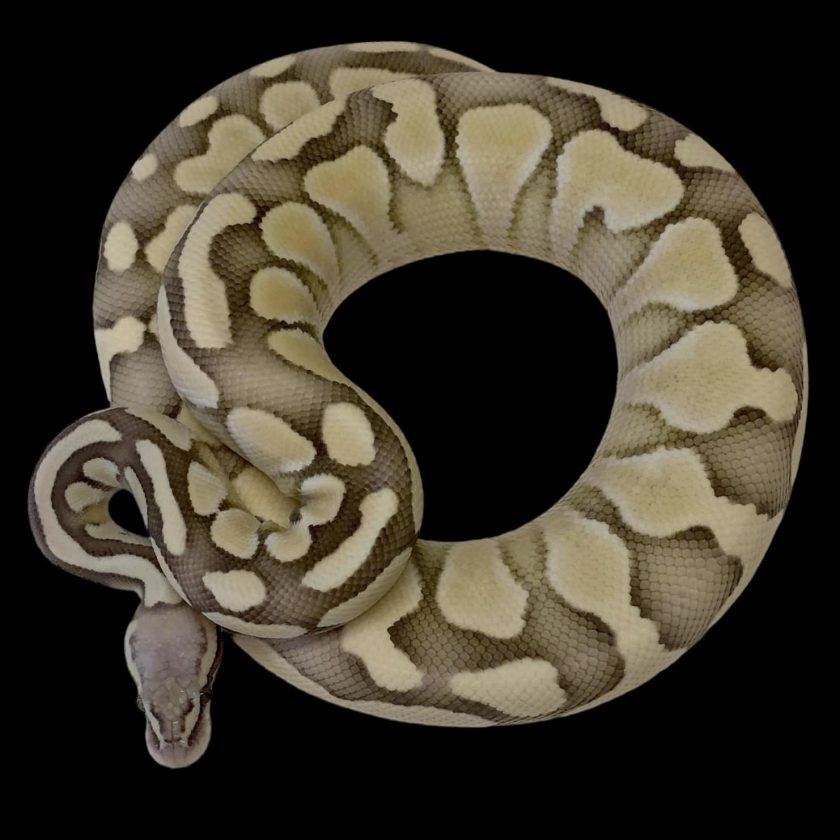
Mark and Kimberly Bell of Reptile Industries were the first to breed Desert Ghost Ball Pythons in 2003. Recent research in 2023 has unveiled that the Desert Ghost Ball Python involves multiple genes, known as DGa and DGb, rather than a single mutation as previously believed. This polygenic trait is mostly explained by the genotype of these two genes, making it more like a simple single-gene recessive trait than many other known polygenic traits. The Desert Ghost trait is coded by two genes found on two different chromosomes, and there is evidence of at least a third gene affecting the visual expression of the Desert Ghost.
The Desert Ghost Ball Python is a unique morph that alters color and pattern. It has various distinct lines, with most being compatible with each other, except for a few, like the Sahara DG.
- Head: Generally dark-brown or black with a lighter crown and subtle eye stripes compared to regular Ball Pythons.
- Body: Initially shows mild yellow patterns that gradually fade to a grayish color with a hint of yellow-gold as the snake ages.
- Tail: Resembles that of a regular Ball Python but follows the Desert Ghost coloration.
Genotypes
To get a visual Desert Ghost, an animal must have at least one mutation in the two different genes, DGa and DGb. The possible genotypes leading to a visual Desert Ghost are:
- DGa: HET DGb: HOM
- DGa: HET DGb: HET
- DGa: HOM DGb: HOM
- DGa: HOM DGb: HET
Genetic testing indicates that many snakes tested for the Desert Ghost trait have similar but not identical chromosomes to the Desert Ghost.
Price Range
The price range for the Desert Ghost Ball Python is $200-$25,000, but considering the complexity of its genetics and the rarity of certain genotypes, the price can vary significantly.
2. Sunset
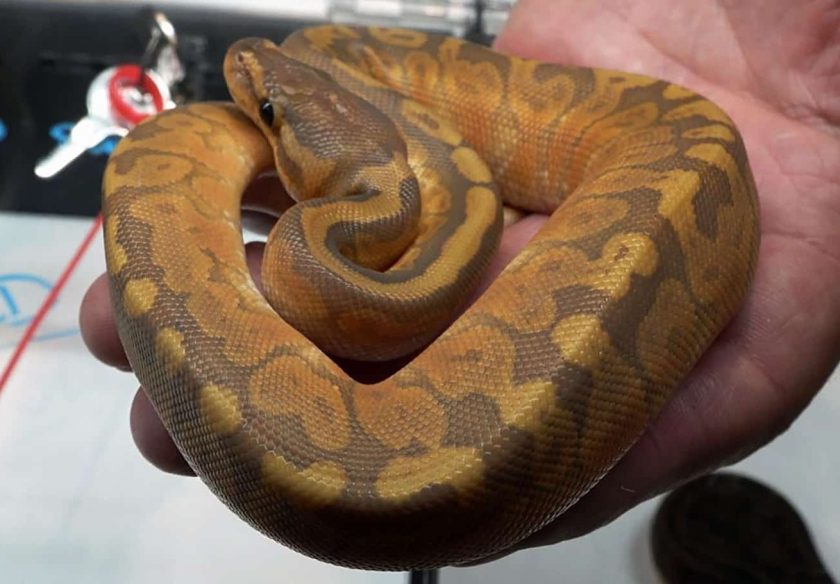
The Sunset Ball Python stands out as a unique and rare morph, first brought to light by BHB Reptiles in 2012. This extraordinary morph is characterized by its recessive genetic trait, making it a prized possession in the reptile world.
History
In the mid-2000s, Brian Barczyk of BHB Reptiles received intriguing information from trappers in Africa about an unusual animal. The images he received showcased a snake with an exceptional burnt orange hue, a color previously unseen in ball pythons. Despite initial disappointments and significant financial investment, Barczyk’s perseverance paid off. After pairing what was believed to be non-genetic animals, a visual Sunset was born in 2012, confirming the recessive nature of this stunning mutation.
Appearance
Head: The Sunset Ball Python’s head exhibits shades ranging from deep tan to a rich chocolate brown.
Body: The body is adorned with a gradient of burnt orange, starting bright on the sides and darkening along the dorsal. Unlike the typical ball python, the Sunset morph displays elongated, flame-like banding and a distinctive bubbly dorsal stripe. Tail: The tail continues the body’s rusty coloration, often featuring a serrated dorsal stripe.
Price Range
The Sunset Ball Python, with its vibrant red, orange, and yellow hues, mirrors a living sunset. The base price for this morph starts around $4,000, but the most exquisite specimens can command prices more than $10,000. The Sunset morph is often paired with other pattern morphs like clown and spider, resulting in even more valuable and sought-after polymorphic pythons.
3. Pastel Zebra
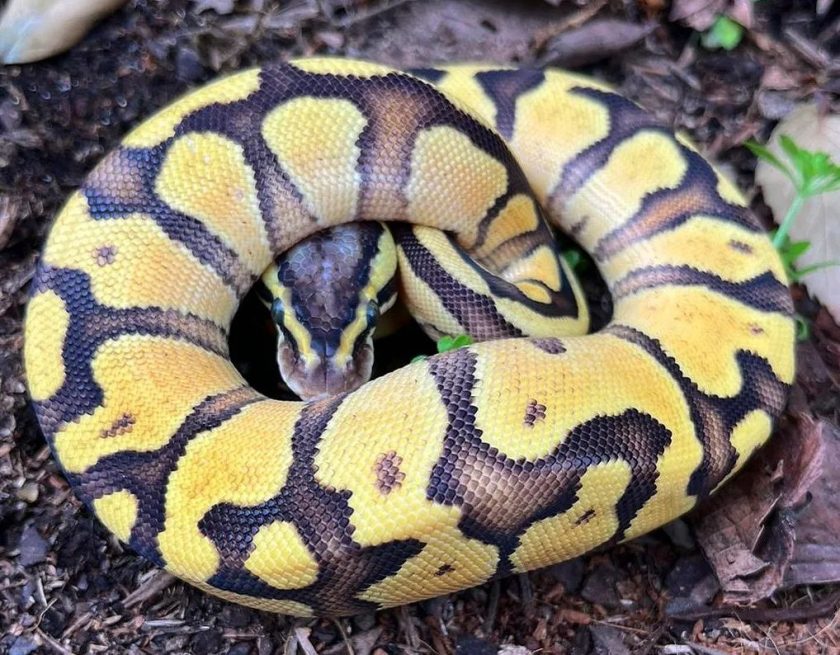
The pastel zebra morph, one of the rarest ball python mutations, was initially discovered in 2005 but wasn’t cultivated for successful breeding until 2015 by Roussis Reptiles. Not only can these amazing creatures be combined with other recessive morphs, such as ghost and clow, but they also become more vibrant with each molt.
As time passes, their scale patterns darken, becoming evermore pixilated and highlighting the stunning colors that make this breed so unique!
Price Range
A genuine pastel zebra python morph can cost from $7,500 to $15,000 or more!
4. GHI Ball Python
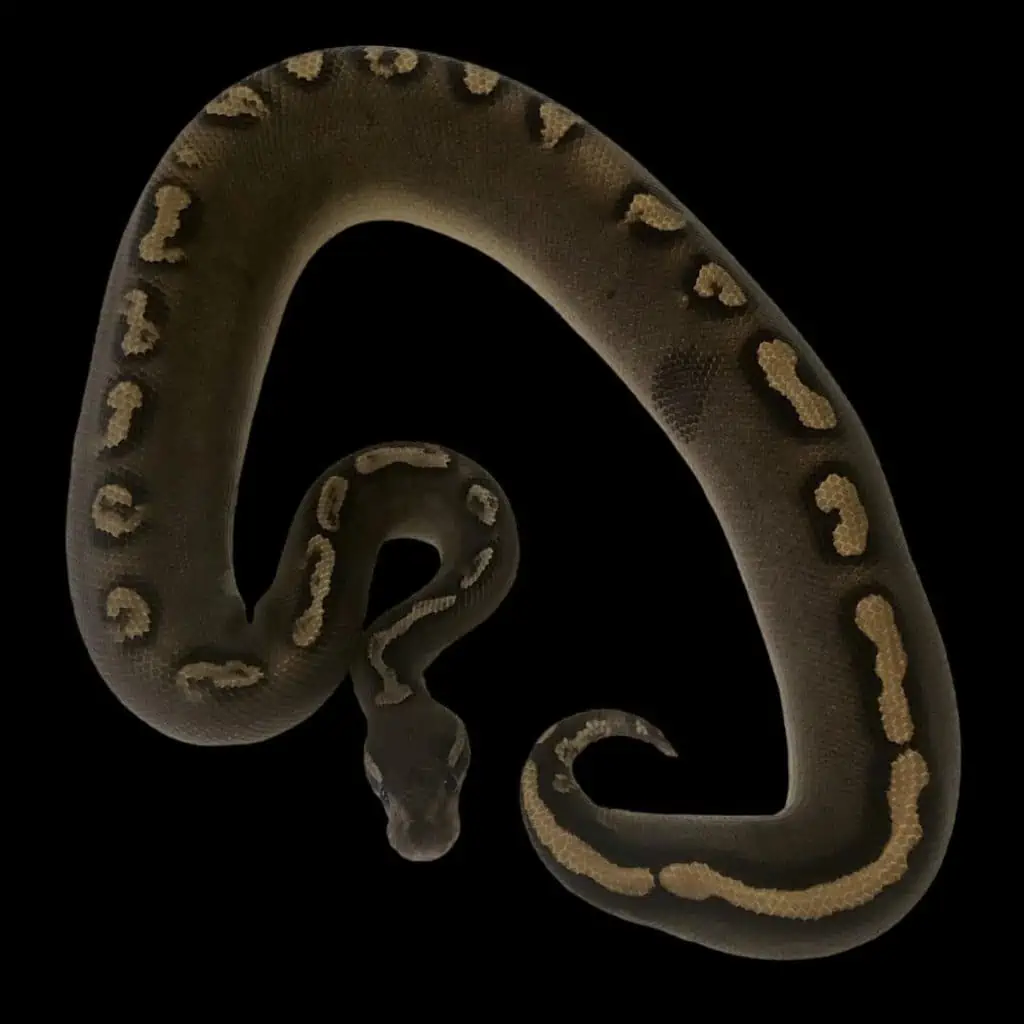
The GHI Ball Python, also known as “Gotta Have It,” was first discovered and bred by Matt Lerer in 2007. The GHI morph emerged from a shipment of imported animals, where three identical and unusual Ball Pythons were found, showcasing the distinct GHI characteristics. Despite its initial rarity, the GHI Ball Python is now more commonly available, though finding a pure GHI Ball Python is still a relative challenge.
Characteristics
The GHI Ball Python is easily distinguishable from a normal Ball Python. It flaunts an extremely dark “puzzle” pattern and strong golden “alien heads.” The head of a GHI Ball Python is predominantly covered with black scales, with markings being a rare sight. The bright yellow-gold stripes are more intensely colored than a Normal Ball Python. The body exhibits “alien heads” that express a hollowness to them, leaving misshapen “rings/splatters” of gold throughout, accompanied by large amounts of spotting. Silvery flames can be observed along the sides against an almost pitch-black background. The belly varies from completely clear of pattern and markings to heavily murky and spotted. The tail continues to show the same hollow “alien heads” visible on its body to either side of a bright-gold dorsal stripe.
Price Range
As for the pricing, a regular GHI Ball Python generally costs around $400 and as high as $14,000. The price may vary, especially if the GHI is mixed with another morph, which usually costs less than $400.
5. Stranger
Photo Courtesy of Collectors Ball PythonIn 2012, IRES Reptiles, a breeder from the Netherlands, made an unintentional breakthrough when they hatched their first two stranger ball pythons. After rigorous research and experimentation over several years, it was confirmed that the stranger morph was genetic.
In 2016 these remarkable creatures were released to the public; due to their novelty status, this makes it one of today’s rarest finds! Stranger Ball Pythons boast an alluring coloration, with a deep black body and brown upside-down teardrop shapes running along the sides.
Attractive brown blushing lies between each teardrop, while its most remarkable feature is a striking bright tan broken stripe that runs down their spines.
In a universe of breeders, only a select few specialize in the stranger gene – and unfortunately, most are outside of America.
Price Range
Owning a Stranger ball python will set you back at least $1,000. They are even more costly if they express other morph genes (polymorphic), up to an astonishing price tag of $20,000 or more!
6. Acid Ball
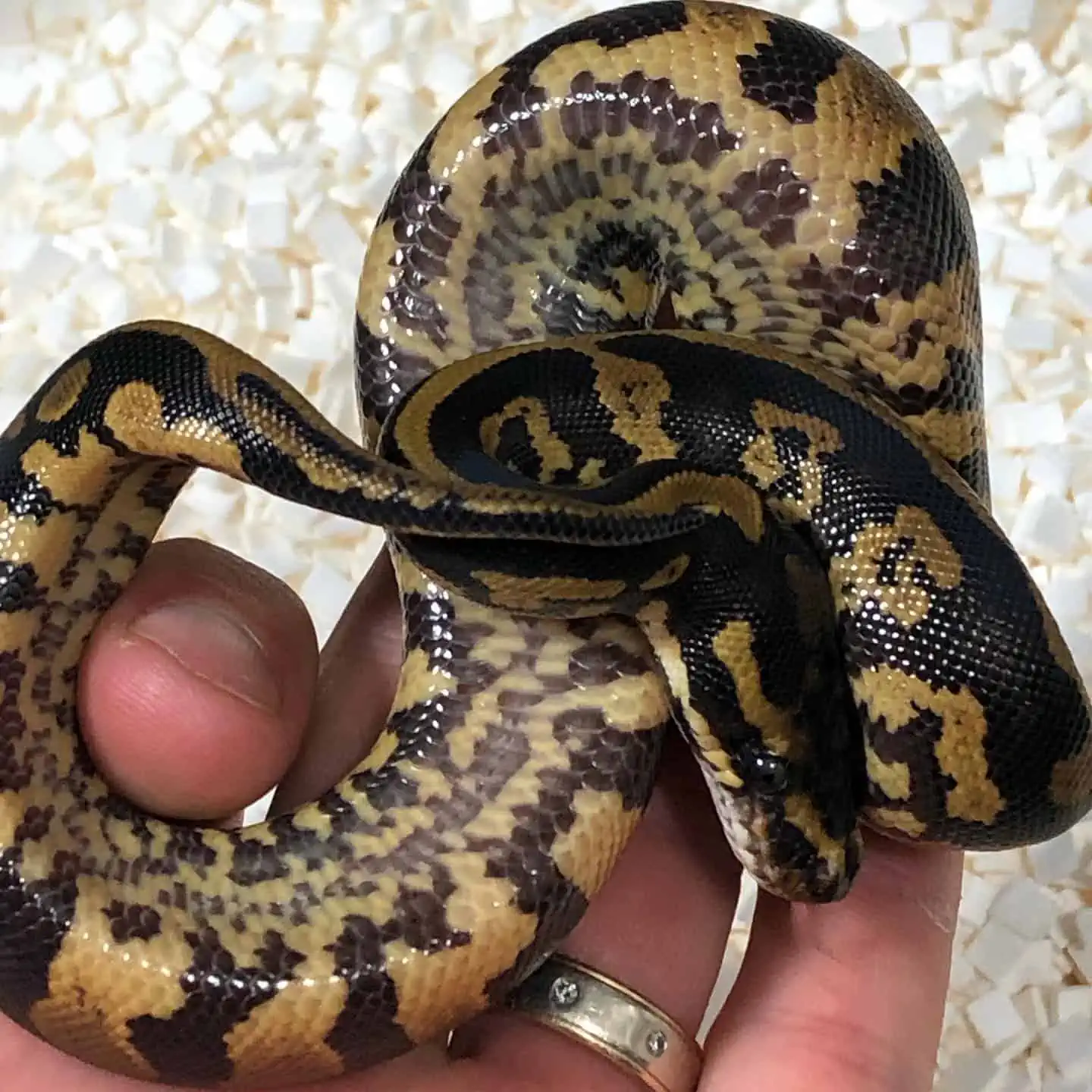
The Acid Ball Python stands out as a unique pattern-altering mutation, identified as an incomplete dominant. This extraordinary breed was brought to light by Josh Jensen in 2014, adding a new dimension to the world of Ball Pythons.
Origin
Josh Jensen embarked on his journey with a clear understanding: making a significant mark in the reptile community required either substantial financial investment or the discovery of a novel genetic trait. His relentless search for “dinkers” led him to an advertisement for a collection on sale, which included a few het Hypos and three Dinkers. Despite learning about the feeding reluctance of one of the Dinkers, imported from Africa, Josh seized the opportunity to purchase it. His immediate success in getting the animal to consume rats was a positive sign, and pairing it with an Albino later proved its incomplete dominant trait, much to his delight.
Physical Appearance
Head: The head of the Acid Ball Python is typically marked by a distinctive clover-shaped headstamp, setting it apart from other morphs.
Body: The body showcases an exceptional pattern characterized by highly irregular and interconnected alien heads, adding to its allure.
Belly: A notable feature is the “zipper” on its belly, a zig-zag band of black scaling that runs down most of its length.
Tail: The tail of the Acid Ball Python often exhibits stripes, further enhancing its unique appearance.
Price Range
The Acid Ball Python has emerged as a dominant morph over others, amplifying its desirability and breeding ease. Even the robust ivory genes find competing with this new entrant hard. The typical price range for these snakes is around $400 to $2,000, with a potential increase for those exhibiting more vibrant yellow coloring than the standard brown.
7. Monsoon
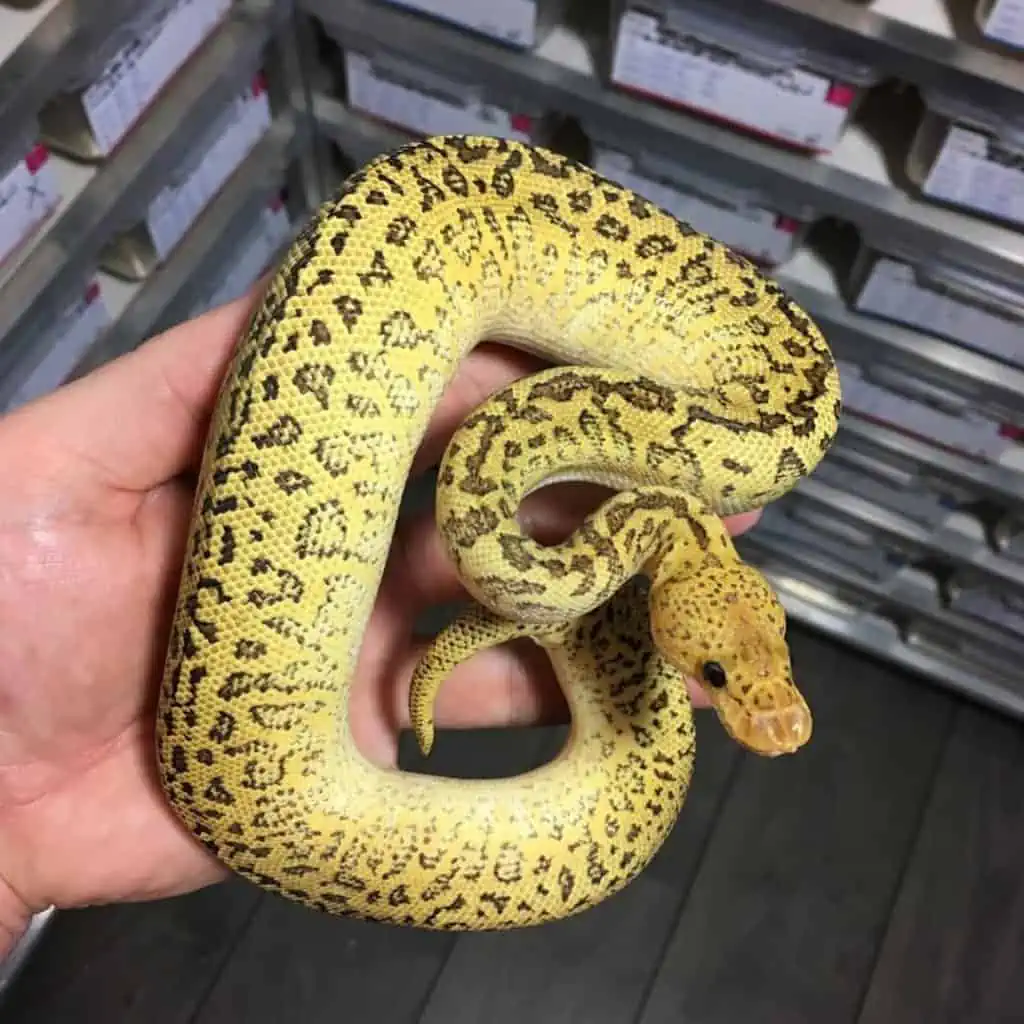
The monsoon ball python gene is a true marvel, producing one of the most eye-catching morphs in existence. Its effects alter the pattern instead of color, first bred by Dave Green Reptiles in 2015 due to an unexpected genetic mutation.
To our surprise, the morph was determined to be recessive—allowing it to be propagated from parents that each possesses its gene. Monsoon ball pythons are distinctively named due to the intricate raindrop pattern that covers their entire body.
These speckles or splashes, usually tan in color on a deep brown background, give them an exquisite look, unlike any other python. However, these snakes become even more fascinating when combined with different color morphs – creating various captivating appearances!
Price Range
Monsoon ball pythons have a price range of a minimum of $2,000 to a maximum of $15,000.
8. Dreamsicle
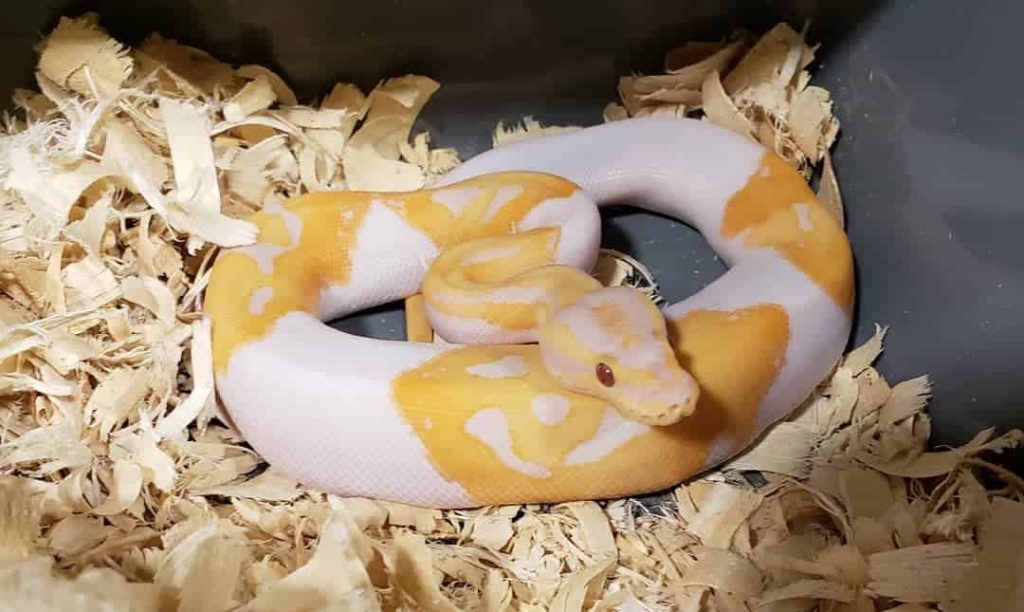
In 2007, Ralph Davis Reptiles first brought the exquisite Dreamsicle Ball Python to life. This designer morph is crafted through a laborious process that requires 2-4 generations of careful breeding to blend Albino, Lavender, and Piebald recessive genes successfully.
The result of all this effort? An awe-inspiring coloration has made these incredible creatures sought after by breeders worldwide! Fascinatingly, these slithering creatures tend to be white or pinkish in the shade, with “pattern clouds” distributed sporadically down their body.
Each blotch is exuberantly orange and distinctly defined, encapsulating small specs of white as an extra captivating detail- something that would not normally emerge on a typical Piebald.
Price Range
An exquisite Dreamsicle ball python can cost a staggering low as $500 – $2,500 or more.
9. Blue-Eyed Leucistic
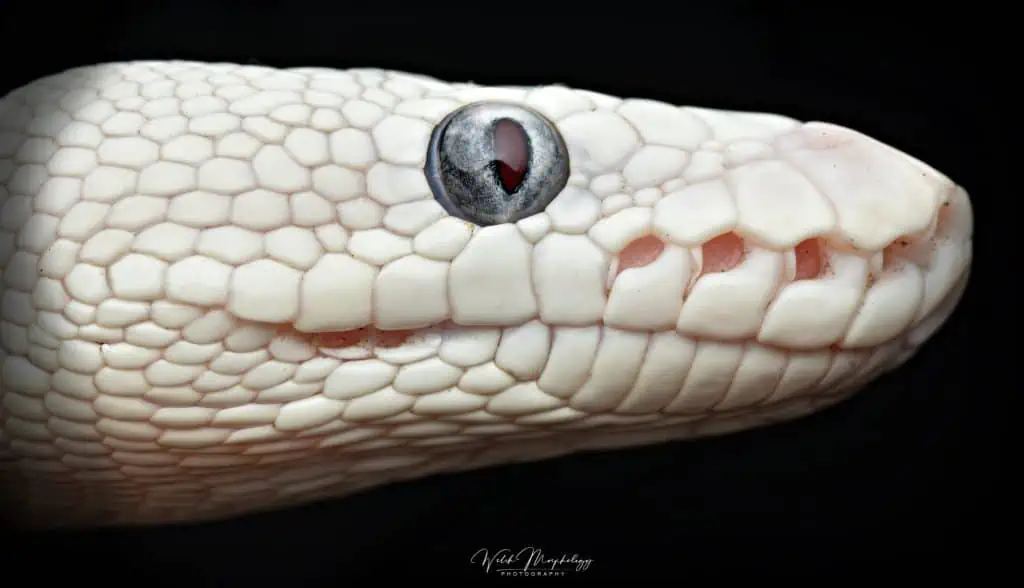
Blue-eyed Leucistics, also known as Blue-Eyed Lucy, are a captivating species with their striking white color and alluring blue eyes, making them an incredible rarity. These snakes possess unique beauty due to their intricate genetics; leucism refers to the lack of pigment on a snake’s scales that produces its crystal clear shade of white.
BEL Complexes:
- Mojave
- Butter/Lesser
- Russo Het Leucistic
- Phantom
- Mystic
- Mocha
- Special
- Daddy Gene
Different combinations of these morphs may produce different colors and patterns, with some combinations more likely to produce a clean, very white species.
- The rarest and most expensive are pure white individuals with no gray or yellow markings.
- This morph is very rare in the wild due to the gene combination behind their pale and white colors, making it difficult for them to hunt and hide in the forest.
- They are now more common in captivity as breeders understand their genetics better, but they are still one of the more expensive morphs, with prices ranging from $400 to $1,000 depending on their color and size.
Note:
Despite their rarity, it’s now easier to find a Blue-Eyed Leucistic Ball Python due to breeders’ understanding of their genetics.
Price Range:
Leucistic morph gene specimens with a captivating blue hue are typically priced at $400 – $600, with the pure white individuals selling more than $1,000.
Final Thoughts
Ball pythons are some of the most diverse and interesting reptiles out there. With a wide variety of morphs that range from hundreds to thousands of dollars, it’s no wonder these amazing creatures have become one of the world’s most coveted pets! From eye-catching blue-eyed leucistic to breathtaking stranger ball python morphs, you’ll be in awe at every glance. Every individual has unique features that make them stand out from their peers. If you’re ready for an extraordinary addition to your collection, look into various Morphs and find a healthy specimen worthy of purchase.
Do you have any of the mentioned ball python morphs? Which rare morph do you love the most? Let us know in the comments below!

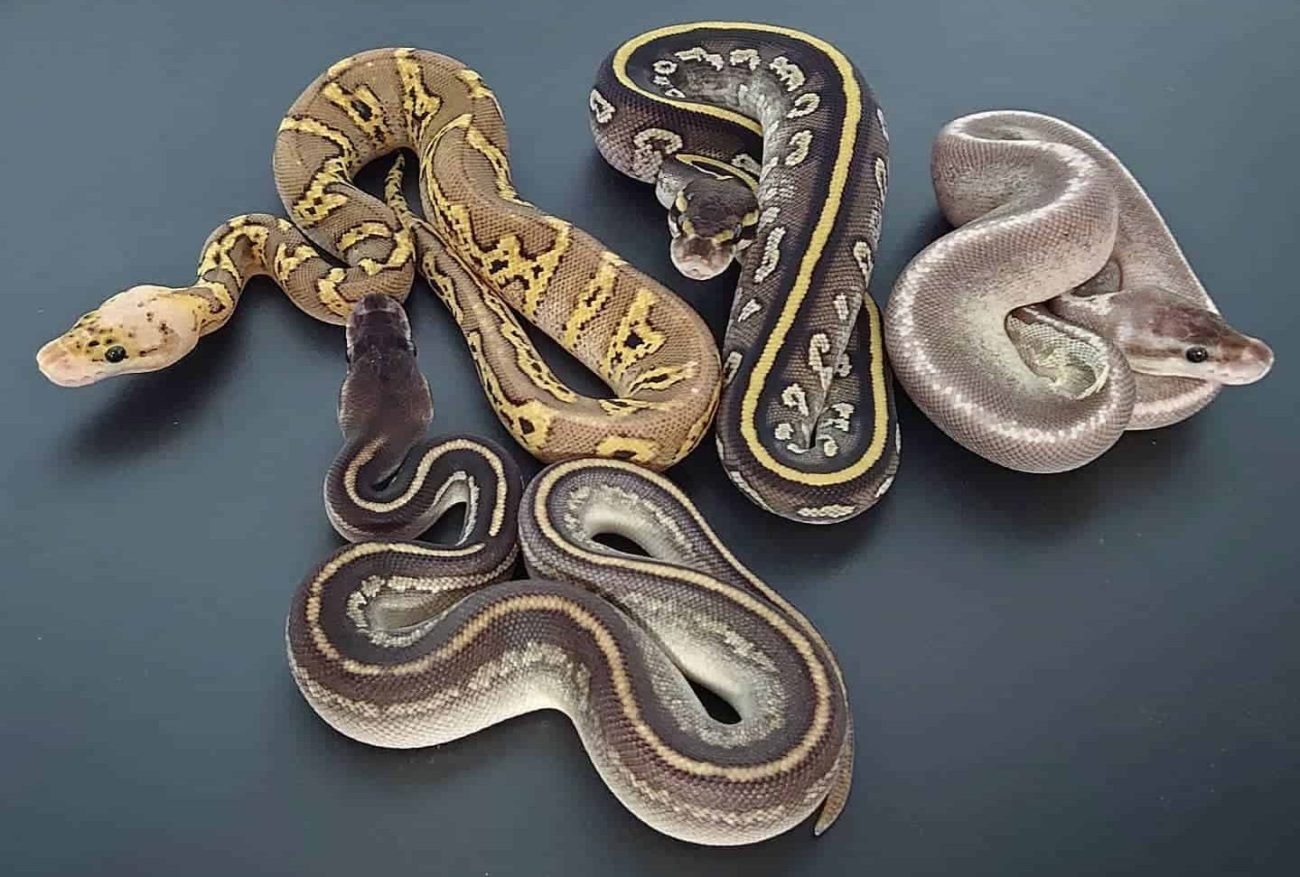
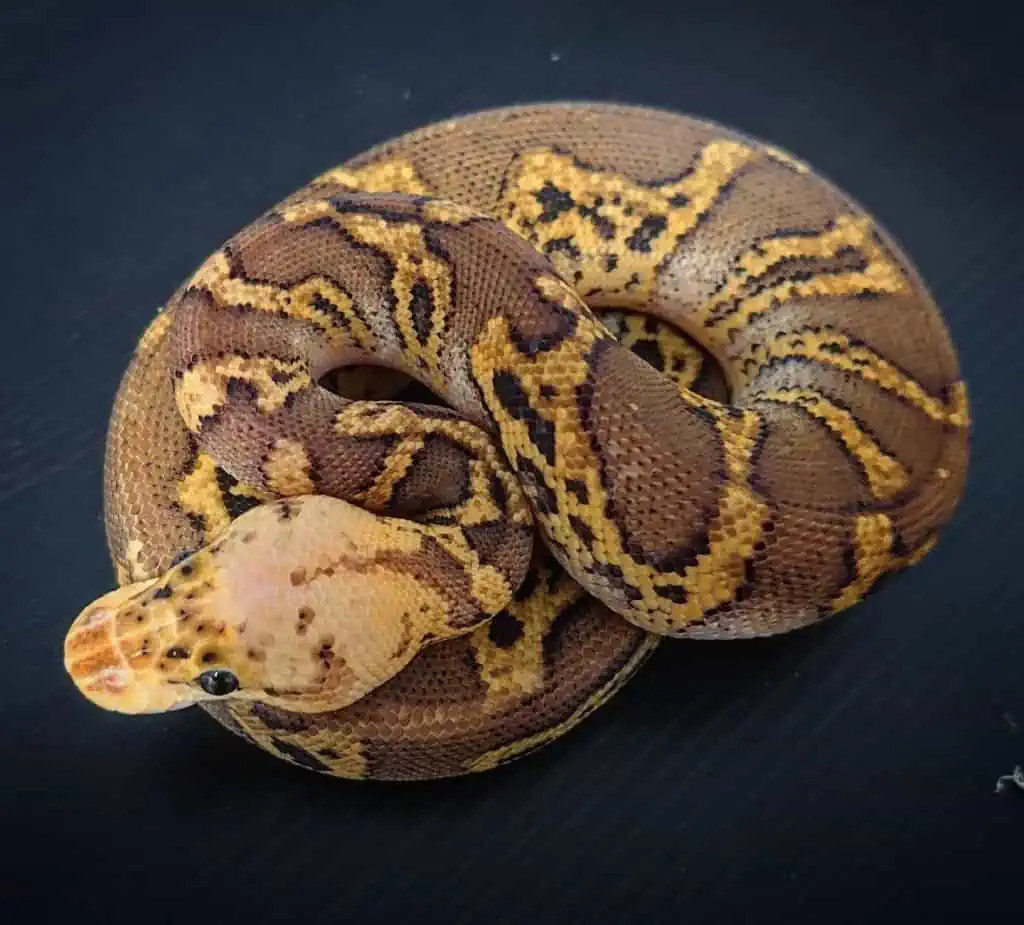

7 Comments
I am a snake keeper of 50+ ball pythons. I love the cool morphs, especially the GHI Mojave, blue eye leucistic(Super Mojave and Mojave butter), white wedding or spider pied, clowns, albino combos, highways and freeways.
I would love to acquire an all black ball python, just need to find the right formulas to make one.
Thanks for your article, I really enjoyed reading it.
Hello SnakeMom!
It sounds like you have a fantastic collection of ball pythons, and I’m so happy to hear your interest in the stunning all-black morphs!
Achieving the perfect, jet-black ball python is definitely an exciting goal. While there are a couple of ways to do this, the most common approaches utilize selective breeding with morphs that enhance dark coloration.
While there isn’t one single formula to guarantee a completely black snake, there are some combinations that can produce incredibly dark individuals.
One very interesting route is to combine these genes:
Black Pastel: This morph adds an incredible depth to the snake’s coloration.
Super Cinnamon (or Super Black Pastel): This intensifies the black pigments even further.
GHI (or another dark morph): Adding another gene that produces darker shades can help you achieve a very dark, nearly black snake.
These combinations often result in snakes with almost entirely black scales, although there may be faint traces of a pattern. It’s important to understand that breeding is complex and there’s always a degree of variability in the offspring.
Let me know if you have any other questions – I’m always happy to discuss the fascinating world of ball python genetics!
Hi Melissa,
Thank you for taking the time to share your thoughts. Let’s address your concerns step by step:
The concept of rarity in the ball python world can be multifaceted, influenced by breeding complexities, demand, and regional availability. While Blue-Eyed Lucys and Bumblebees might be prevalent in some areas, their intricate genetics can still make them unique in others.
The price of a snake is influenced by its genetics (both phenotype and genotype), lineage, age, health, and the breeder’s reputation. For instance, a snake with a well-documented lineage and pure genetics might command a higher price.
Breeding ball pythons is an intricate process. The outcome can be influenced by both the phenotype (visible traits) and genotype (genetic makeup). Two snakes might appear similar but have different genetic compositions, affecting their offspring’s traits.
Snakes sold at lower prices might not always have the purest genes or could come from a less-documented lineage. This is why purchasing from reputable breeders is crucial.
While you mentioned that Blue-Eyed Lucys start at $400 and average between $400-$600, there are instances where they are priced higher based on the factors mentioned above. For instance, on cbreptile.com, Blue-Eyed Leucistic ball pythons are priced between $499.95 and $1,299.95. And on MorphMarket it’s selling as high as $1,500.
Our article provides a general price range observed in the market. Prices can fluctuate based on various factors, and our aim was to give a broad overview. We appreciate your insights and will always strive to offer the most accurate information to our readers. Your feedback helps us improve.
Hey doctor,
So my husband has been breeding ball photons and anything reptile since he was a boy we own a company we are small but we are proud the spider gene is not sought after nor rare to the neurological wabble they pass on. They honestly are highly discouraged much like scaleless morphs due to the issues with shedding, zebra not zebra pastel is a rare gene so is stranger followed by desert ghost. I admire your spunk and the very effort putting together this list took and that us commendable but Justin Cabulca made an offer if 38 thousand for one of the first ever desert ghost produced outside his program maybe check out morphmarket.com they are the Kelly blue book for all things reptile well take care Doc and thanks again for your thoughts. Ps my companies name is incubation creations we also make custom incubators tailored tword you’re incubating needs.
Hi Lyndsey,
Thank you for sharing your valuable insights and information about specific genes and morphs. I’ve updated the article to include more about rare morphs, keeping your knowledgeable input in mind. Your reference to Morph Market and the importance of health alongside rarity is greatly appreciated. Wishing all the best to you and Incubation Creations!
I have a ball python that shed almost 2 weeks ago now, and there is still a stubborn patch on his head that won’t come off. I’ve tried soaking him 3-4 times now, keeping the humidity at around 65-70% and it just stays there. I don’t understand, and will it just come off during his next molting? He’s still a baby less than 6 months old, maybe only 4-5 months.
Hi Eric,
Shedding issues, especially in younger snakes, can be a bit concerning. It sounds like you’re doing the right things with soaking and maintaining humidity. For stubborn patches, especially on the head, you can try dampening a soft cloth or cotton ball with warm water and gently rub the area to help loosen the skin.
However, be very gentle and cautious, as the head is a sensitive area. If the patch doesn’t come off with gentle assistance, it’s possible it may come off during the next shed.
However, if you’re concerned or if the retained shed seems to be causing discomfort or other issues, it’s a good idea to consult with a reptile veterinarian. They can provide guidance and ensure there’s no underlying issue causing the incomplete shed.